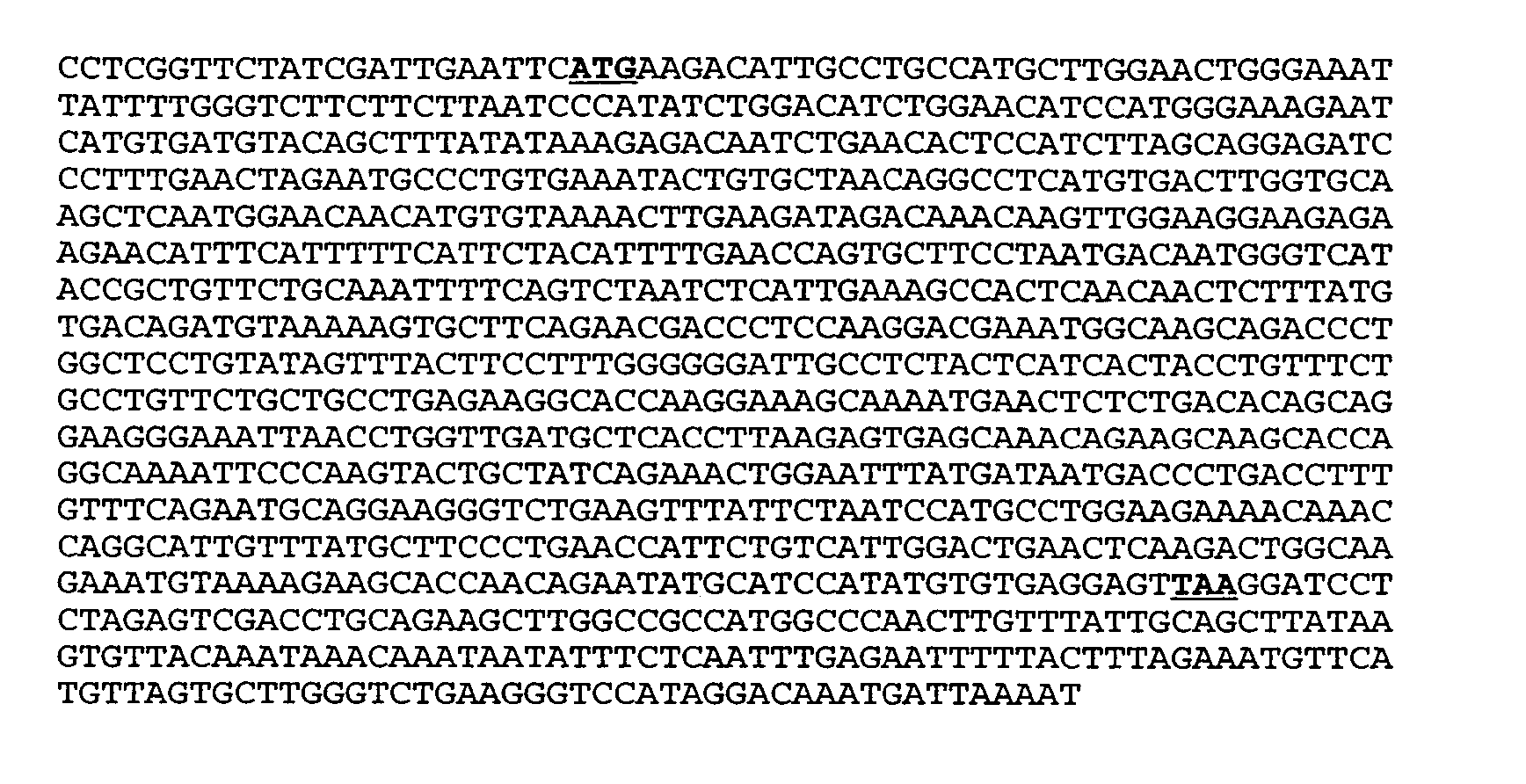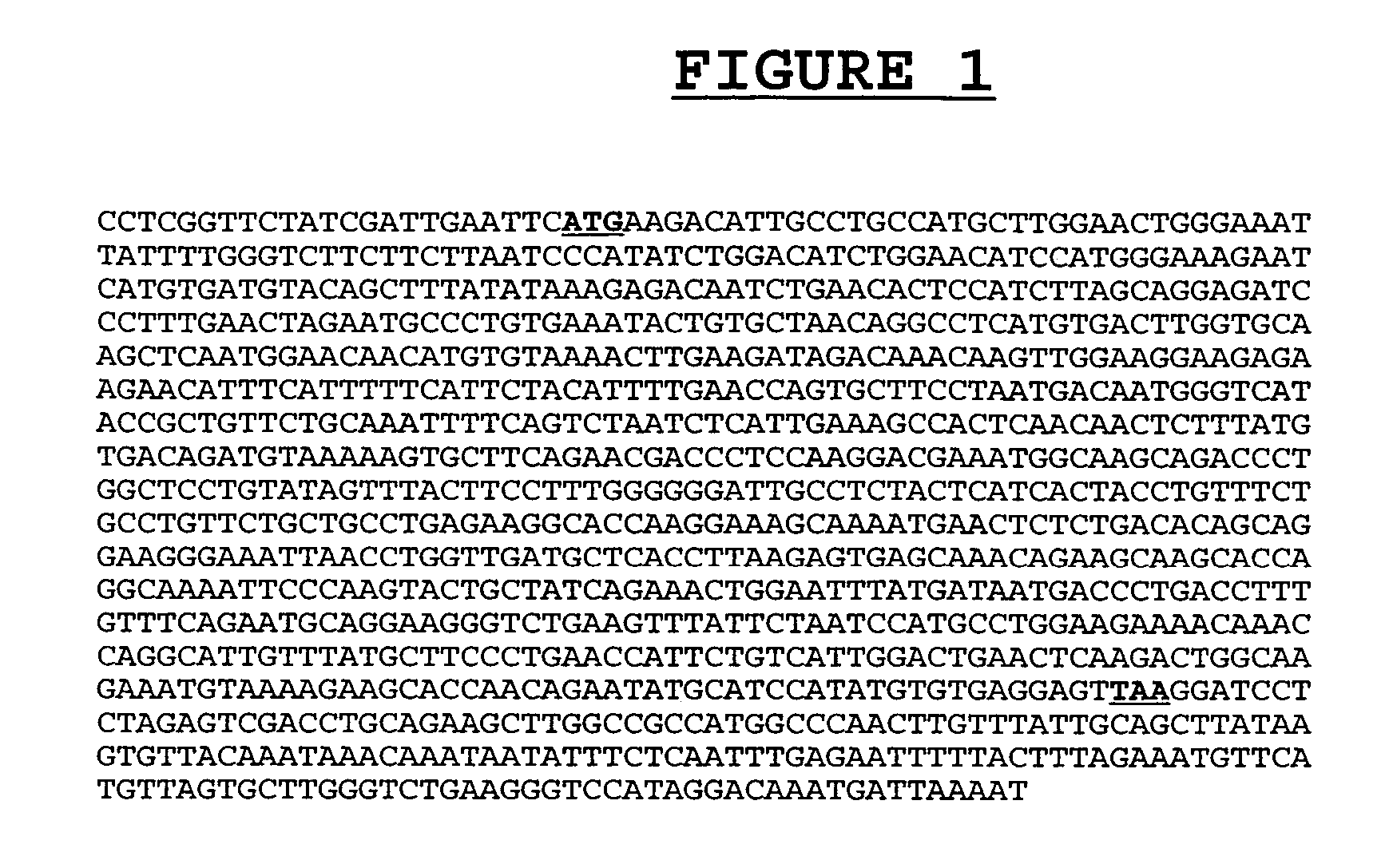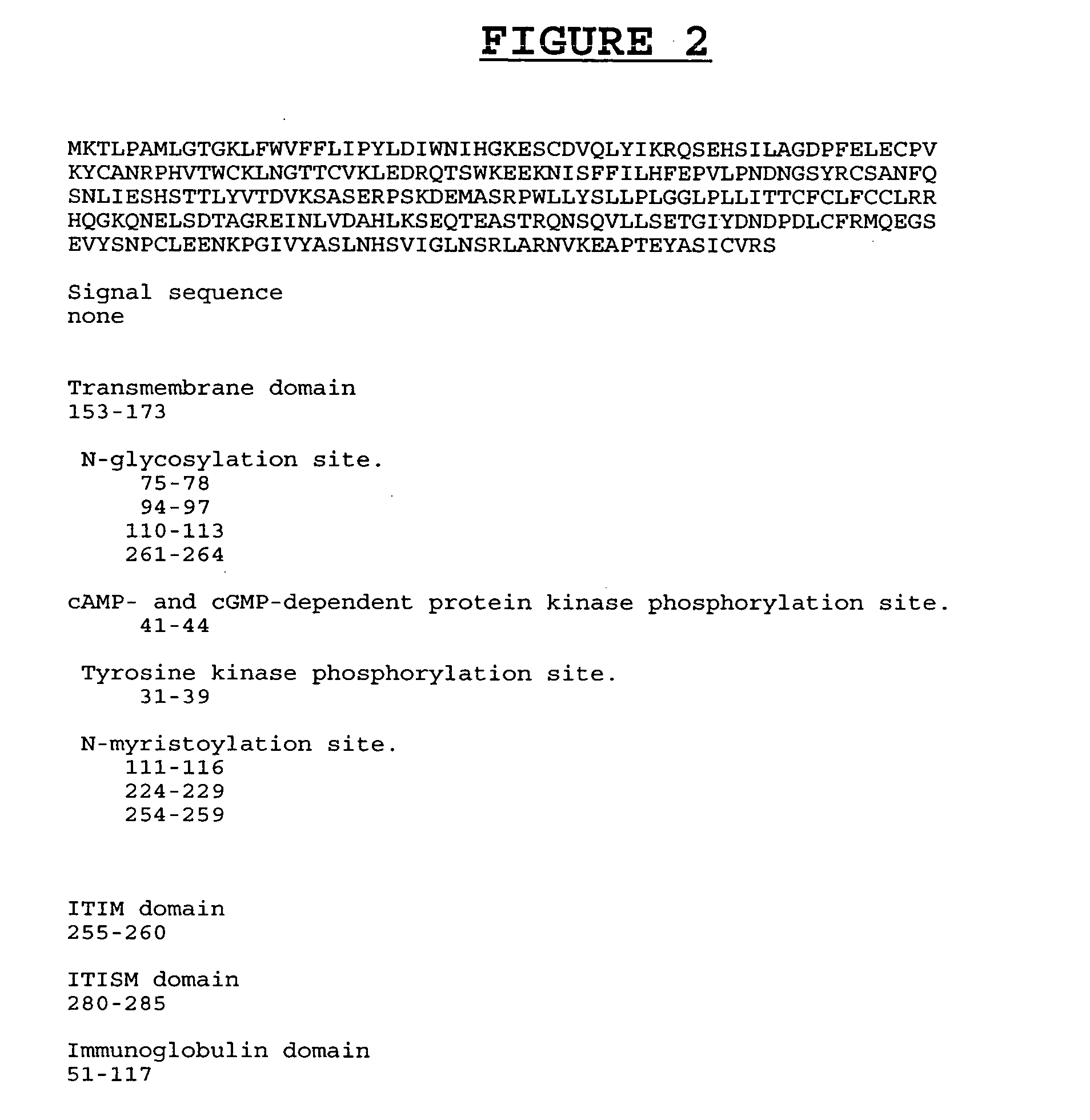Novel composition and methods for the treatment of immune related diseases
a technology for immune related diseases and compositions, applied in the field of compositions and methods useful for the diagnosis and treatment of immune related diseases, can solve the problems of chronic, unpredictable course, fibrosis, etc., and achieve the effects of increasing the proliferation of immune cells, and increasing the activity of immune cells in mammals
- Summary
- Abstract
- Description
- Claims
- Application Information
AI Technical Summary
Benefits of technology
Problems solved by technology
Method used
Image
Examples
example 1
Cloning of PRO87299
[0363] An expressed sequence tag (EST) DNA database (Merck / Washington University) was searched and an EST was identified which contained domains of interest, specifically Immunoglobulin (Ig) domain(s) and Immuno Tyrosine Inhibition Motif(s) (ITIM). The search was performed using the computer program BLAST or BLAST2 [Altschul et al., Methods in Enzymology, 266:460-480 (1996)] using as a comparison the domains of interest to a 6 frame translation of the sequences. Those comparisons resulting in a BLAST score of 70 (or in some cases, 90) or greater that did not encode known proteins were clustered and if necessary, assembled into consensus DNA sequences with the program “phrap” (Phil Green, University of Washington, Seattle, Wash.).
[0364] Based on the sequence as described above, oligonucleotides were synthesized: 1) to identify by PCR a cDNA library that contained the sequence of interest, and 2) for use as probes to isolate a clone of the full-length coding seque...
example 2
Cloning of of PRO87299 Variants
[0369] PRO87299 was screened for sequence variants on B-cell RNA from 16 different donors. RT-PCR was performed on this RNA to produce the full length PRO87299. The PCR products were cloned into vectors that allowed for high throughput sequencing and analyzed by double-pass sequencing. Several PRO87299 variants showed minimal variation (FIG. 11A-F). However, a truncated version was found which has exon 3 deleted which deletes the transmembrane domain (FIG. 7, SEQ ID NO:7). The truncated version is deleted from nucleic acids 403-547 of the native protein, resulting in a variant PRO87299 polypeptide (FIG. 8, SEQ ID NO:8) that is only 241 amino acids in length, while the native PRO87299 is 289 amino acids in length. A lack of transmembrane domain may mean that this PRO87299 variant is a secreted form.
[0370] An additional PRO87299 variant was discovered, which comprises an 18 nucleotide base pair insertion at the 5′ end of exon 3 (FIG. 9, SEQ ID NO:9). T...
example 3
Microarray Analysis of Stimulated T-Cells
[0372] Nucleic acid microarrays, often containing thousands of gene sequences, are useful for identifying differentially expressed genes in diseased tissues as compared to their normal counterparts. Using nucleic acid microarrays, test and control mRNA samples from test and control tissue samples are reverse transcribed and labeled to generate cDNA probes. The cDNA probes are then hybridized to an array of nucleic acids immobilized on a solid support. The array is configured such that the sequence and position of each member of the array is known. For example, a selection of genes known to be expressed in certain disease states may be arrayed on a solid support. Hybridization of a labeled probe with a particular array member indicates that the sample from which the probe was derived expresses that gene. If the hybridization signal of a probe from a test (in this instance, activated CD4+ T cells) sample is greater than hybridization signal of...
PUM
| Property | Measurement | Unit |
|---|---|---|
| temperature | aaaaa | aaaaa |
| pH | aaaaa | aaaaa |
| pH | aaaaa | aaaaa |
Abstract
Description
Claims
Application Information
 Login to View More
Login to View More - R&D
- Intellectual Property
- Life Sciences
- Materials
- Tech Scout
- Unparalleled Data Quality
- Higher Quality Content
- 60% Fewer Hallucinations
Browse by: Latest US Patents, China's latest patents, Technical Efficacy Thesaurus, Application Domain, Technology Topic, Popular Technical Reports.
© 2025 PatSnap. All rights reserved.Legal|Privacy policy|Modern Slavery Act Transparency Statement|Sitemap|About US| Contact US: help@patsnap.com



